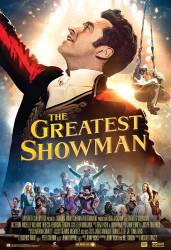
Question: Why was Zendaya considered as one of the "freaks" (like they called them), even though she looked normal?
Answer: Her brother said people of the time didn't want to see colored people on the stage. It's clear throughout the entire movie that she faces undue discrimination from the public just for not being white.
Answer: There were other people in the circus who were just normal but had amazing abilities.
She was half black and half white.
Answer: Because her actress, Zendaya, is mixed race (part African American and part Caucasian American), and Anne is either that too or African American (either way, she would have been ostracised at the time the movie is set), and so Anne would have been seen as a freak for that reason.

Question: What was the math problem on the blackboard behind Julia Roberts? I think the answer is wrong as x and y equals 3.
Answer: Yes, the solution given is wrong, it should be (x=-4, y=4). Glad I'm not the only one noticing that. Actually that's how I found this page :)
Answer: August says she's terrible at fractions, may be maths is not her strong point.

Question: Do we know how Georgie actually dies? We see his arm get ripped off, are we to assume Pennywise dragged him down then ate him immediately or left him to bleed to death and then ate him or that he is also "floating"?
Answer: I would think that the shock of having ones arm ripped off would be more than enough to die from that injury alone. Georgie tries to crawl away so his death is not instantaneous. But bleeding to death is a very real probability. Could have been cardiac arrest.
Answer: I think whatever happened to Georgie is what we may or may not imagine happening to him, but whatever did happen, we all know that Georgie dies because he comes back, but he's more like a hallucination because IT makes you see whatever is your worst fear.

Question: Why did the spitfire pilot land on the beach at the end of the movie facing certain internment when he could have ditched and be taken back to Blighty?
Answer: After running out of fuel, he kept his craft aloft as long as he could so he could shoot down the enemy plane. He then landed when and where he safely could, which was on the beach but in enemy territory. Ditching a plane in water is dangerous and would have meant far less chance of survival.
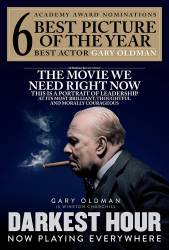
Question: In the 'War Room' scene, there appeared to be a sheet of plastic or acetate covering the wall with the map of the enemy's movements. Was that premature for plastic to be available in that size for that time frame?
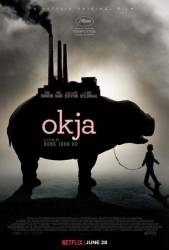
Question: In the end credit scene, K gives a cigarette to Jay, who has just gotten out of prison. Jay takes it, but instead of smoking it, he stubs it on the bottom of his own shoe and gives it back to K. Why is he doing so?
Chosen answer: It's a way of showing Jay is not a smoker and doesn't approve of smoking. He most likely sees it as something that is bad for people's health, so he stubs it out on his shoe to get rid of it and so that K cannot keep smoking it.
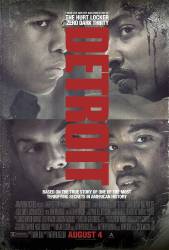
Question: Why didn't the guys being interrogated in the hotel just tell the cops about the toy gun that was used? 4 of them knew that it was that gun that was shot out the window and another 4 knew that the gun existed, but they all choose not to mention it. Any reason?
Chosen answer: I think at 1st they didn't want to answer as they don't talk to police, but as it went on their lie just got bigger and the hole they were digging got so big they could not get out. They also figured the police would not believe it was fake and they would be in loads of trouble if they admitted there was any kind of gun. They call it a toy gun, but it is not really a toy as it's a starter gun.
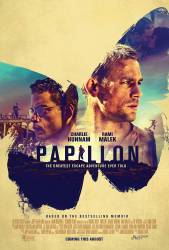
Question: How did Papillon, Diega and Marturette manage to sail to Colombia after their second escape attempt? Colombia is on the opposite side of South America from French Guiana/Devil's Island. It seems like they would have ended up in Suriname, Guyana, Venezuela, Trinidad and Tobago, Curaçao or Aruba long before ending up in Colombia. I'm sure the book sheds light on this, but the movie completely glosses over it.
Answer: I discovered the answer to this by reading the book's plot synopsis on Wikipedia. The inmates actually sailed to Trinidad and then picked up three other inmates. They set sail again and were captured near the Colombian coastline when the wind died down. It would appear that in the interest of saving time, the movie chose to just have them appear in Colombia.
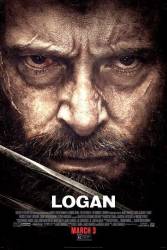
Question: This question and answer may contain spoilers. The film made it seem like once the mutant children cross the Canadian border, they would be safe. Dr. Rice (I believe it was him) even says they (the Reavers) need to hurry or they'll lose the children if they cross. My question is why? Did I miss something? Who was suppose to meet the children in Canada? Or is Dr. Rice saying they can't follow the children into Canada, and if so, why not? Alkali Lake was in Canada and it doesn't seem they have any regards for laws and borders. And surely if the children were that valuable, or the need to destroy them so important, why would Dr. Rice not send his army of Reavers to battle whoever was helping the children?
Chosen answer: It is subtly shown that Rice has a deal with the US government to conduct his business without conflict, something he won't have in Canada. There is also a strong theory that the people helping the children is Department H. The Canadian organization that started the super team, Alpha Flight.

Question: After Frank rescues Fred from being euthanized at the animal shelter he takes two other cats with him. Why does he take the two other cats?
Answer: Because they were going to be euthanized. He wouldn't leave them to be killed.

Question: In the opening scenes when Poirot confronts the rabbi, priest, and imam - the priest is Catholic / Western Rite. But from the setting of their dispute in Jerusalem, shouldn't the priest be Orthodox / Eastern Rite?
Answer: Not necessarily. Jerusalem is a meeting place of many religions and faiths - and there's nothing to suggest that the Catholic priest isn't there on holiday.
Except it's stated that priest was negotiating market use (with the imam and rabbi). He was a local.
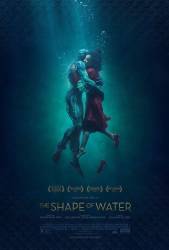
Question: Isn't this film blatantly derivative of Guillermo del Toro's earlier films, "HellBoy" and "HellBoy: The Golden Army"? It seems to me that the Asset in "The Shape of Water" is a direct knock-off Abe Sapien from the Hellboy films. The amphibious Asset is held at a top secret facility, as was Abe Sapien; the Asset is fed hard-boiled eggs, as was Abe Sapien; the Asset develops a love interest and romantic relationship with a female air-breather, as did Abe Sapien. To top it off, del Toro called in contortionist-actor Doug Jones to play the Asset in "The Shape of Water" (Doug Jones also played Abe Sapien in the HellBoy films). "Shape of Water" could almost be a spin-off the old HellBoy films, given Guillermo del Toro's involvement and recycling of familiar themes.
Answer: There are a lot of Hellboy fans who speculate this is an origin story of Abe, or at the very least the Asset is the same species, but del Torro has denied it. Abe is a copyrighted character that del Torro's Hellboy was based on, and he doesn't own the copyright. In addition, prior to The Shape of Water, del Torro was in talks with Universal about remaking "The Creature from the Black Lagoon", only making the movie center on the creature's (Gill-Man) perspective and getting together with Kay (the female lead). Del Torro has stated that the Amphibious Man is based on Gill-Man and this film is what he had pitched to Universal, but was turned down by them. Although, a creature developing a love interest in a human female isn't unique, nor is capturing a creature to study (both happen to Gill-Man, Abe, and Amphibious Man). But the fact that Doug Jones plays both Abe and the Amphibious Man only seems to strengthen theories of some connection to Hellboy, but at this point we only have del Torro's word that it's not and why he choose the creature to be so similar at this point would only be a guess.

Question: Everyone at the Magic Castle Inn wanted to go and see the abandoned condos that caught on fire, except for Scooty. There are so many people around that tourist area. Anyone could have done it. What makes Ashley (Scooty's mother) think that Scooty was the one that caused the fire?
Answer: Because Scooty was nervous and didn't want to see it. If he wasn't the one that did it, he more than likely would have been curious and watched it with his mom.
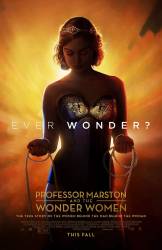
Question: Assuming people knew, how did Marston avoid trouble for living with two wives?
Answer: Though it may be considered immoral and socially unacceptable, particularly during the film's 1940s time frame, it is not illegal to live with multiple people in a sexual relationship. It is only illegal to be married to more than one person at the same time. Marston was not a bigamist. He was legally married to his wife, Elizabeth. They engaged in a consensual polyamorous (not polygamous) relationship with Olive, who was not married to Marston.
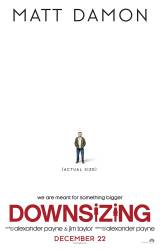
Question: For no obvious reason - except for the fun of it - the downsizing procedure included a complete shave-down. In the Norwegian colony they have horses, sheep and dogs. Were the animals also shaved before being downsized?
Answer: They apparently shave them because the process only works on living tissue. So yes, they would have had to shave the animals.
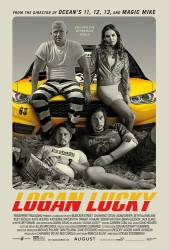
Question: What was the purpose of Channing Tatum preventing the gate from opening?
Answer: Jamming the gate by blocking the sensor delayed Joe Bang's brothers long enough for Mellie to come and collect some bags full of cash. Jimmy specifically did not trust them to know his entire plan. This part of the ruse allowed them to steal a separate stash of money so they could pretend to return the stolen money, whilst secretly keeping some to distribute later.

Question: Maybe I missed it but is there a particular reason why Christian won't let Ana touch him?
Answer: Because he's extremely neurotic and is unable to have intimate relationships with women other than purely sexual ones. He also did not want to be touched in the area where he'd been physically scarred by his birth mother's abusive boyfriend.
That was her pimp/client, not her boyfriend. She was a prostitute.

Question: As a non-native English speaker, I ask: At the dinner, Jim says to his boss, "I was thinking, with the numbers so high, maybe it's time I get off the road and take an office position." What occupation did he have? And what does he mean "get off the road" here?
Chosen answer: I don't know what his specific occupation was, but the term to "get off the road" would refer to someone who constantly travels, either domestically or internationally, for their job, but they now want to work in their company office every day. The most common trope would be the "traveling salesperson" who was constantly "on the road," going town to town, selling their product.

Question: Did the dog die, if not what happens to him?
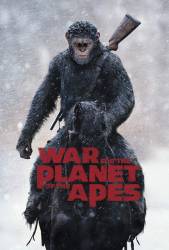
Answer: I'm pretty sure because she was a person of colour.